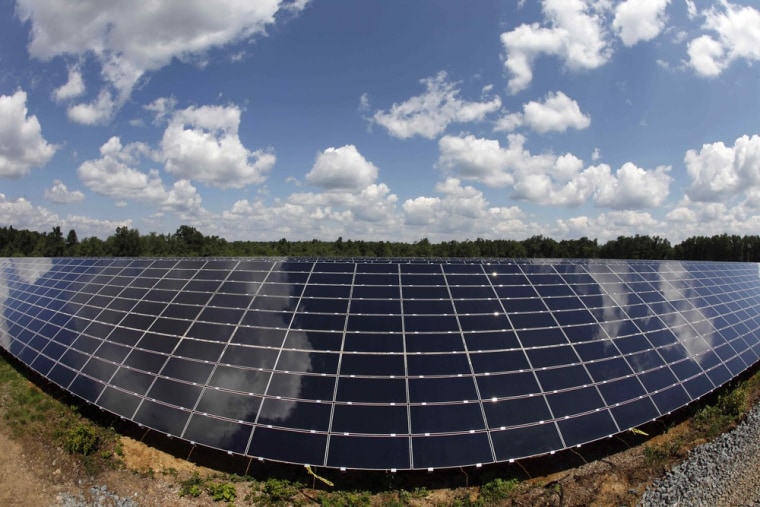A team of U.S. researchers has developed a model to identify technologies that are on the fast track to constant improvement. When applied to energy, it could help investors and policymakers sort out which ones will help us avoid catastrophic climate change.
"That is certainly an inspiration for this kind of work," Jessika Trancik, an assistant professor of engineering systems at the Massachusetts Institute of Technology, told me on Wednesday.
International climate negotiators have set a goal of limiting climate warming to 2 degrees Celsius, which will require keeping a lid on concentrations of the greenhouse gas carbon dioxide in the atmosphere to between 450 and 550 parts per million.
"If you look at the international goals that have been set limiting greenhouse gas emissions, you can see that we really need to move quickly," Trancik said.
Design complexity
In theory, the model she and colleagues developed can be used to pinpoint which technology designs will have the sort of fast improvement over time (think Moore's law and the evolution of computer chips) to make a realistic dent in emissions.
Essentially, they found the greater a technology's complexity, the more slowly it changes and improves over time, MIT explains in a news release. Complexity here relates to design complexity.
The model mathematically breaks a system down into its individual components and then maps all the interconnections between these components. The team found that certain patterns of interconnection can create bottlenecks that cause a technology's improvement to go in fits and starts.
Previously, researchers have compared things such as which energy technologies are moving faster by looking at their experience curve — the cost of an item against its cumulative production, James McNerney, a graduate student at Boston University, explained to me.
Technologies with the steepest slope are seen as the best investment because they are the ones that respond most to increases in production. Make more widgets more quickly and you bring down the cost of the widget.
A better basis for prediction is needed, according to McNerney, who is the lead author of the paper published May 12 in the Proceedings of the National Academy of Sciences.
"I think our paper marks the first progress on that problem in a long while by offering one possible better basis for prediction — the engineering design of the technology as expressed by its design structure matrix," he told me in an email.
Energy technologies
According to McNerney, the model isn't ready to make any prognostications on which energy technology design is primed to help humans curb climate change, partly because the full data set to make the comparisons hasn't been collected.
("The team has collected large data sets on experience curves for energy technologies. They also have data on design structure matrices, but this harder to come by," Trancik noted).
"That data is probably out there, but stuck in textbooks, papers, diagrams, or engineers' heads, and needs a grad student willing to dive into all that," he said in his email. "Unfortunately, I haven't had time to do that yet!"
General trends in experience curves, though, are already notable, said Trancik. For example, the cost of electricity from solar power has come down "dramatically" over the lifetime of the industry whereas the cost of coal-fired electricity has been stagnant in recent decades.
"Those two I would say are at opposite ends of the spectrum in terms of rate of improvement," she said.
Of course, she added, the cost of coal-fired electricity is already low, which makes it an economically attractive technology for today.
"It is not just about making the best decisions for today, right now," she said. "You can think about balancing today against tomorrow in terms of rate of the improvement of these technologies, which I think is something that is very important for both designing technologies and investing in technologies."
Note: Post updated on Oct. 11, 2011 to more accurately reflect the scope of the data review.
More on energy and climate change:
- Ten hot green-energy trends to watch
- Green-energy ideas so crazy they might just work
- Climate change panel drafts renewable energy paper
- Obama's climate card: nuclear power
- Report: China, India seen as key to energy, climate
John Roach is a contributing writer for msnbc.com. Connect with the Cosmic Log community by hitting the "like" button on the Cosmic Log Facebook page or following msnbc.com's science editor, Alan Boyle, on Twitter (@b0yle).
